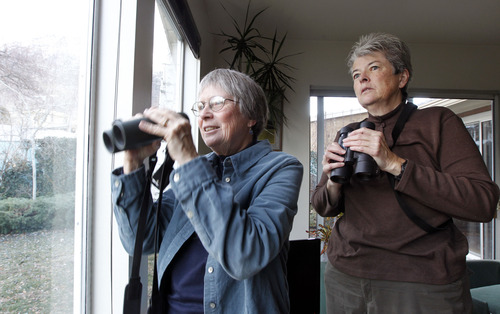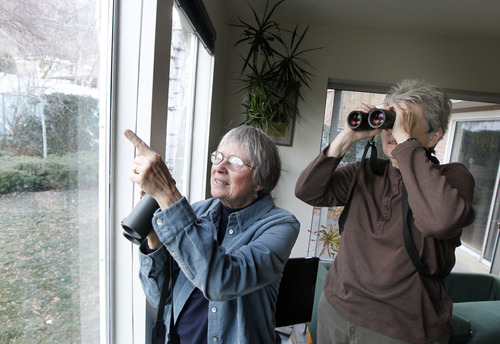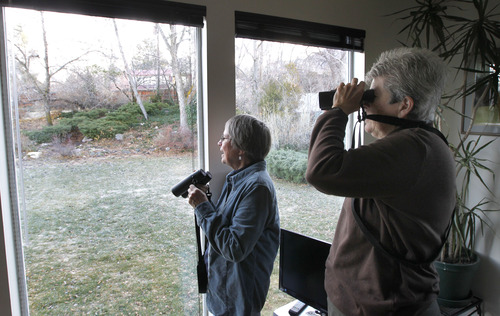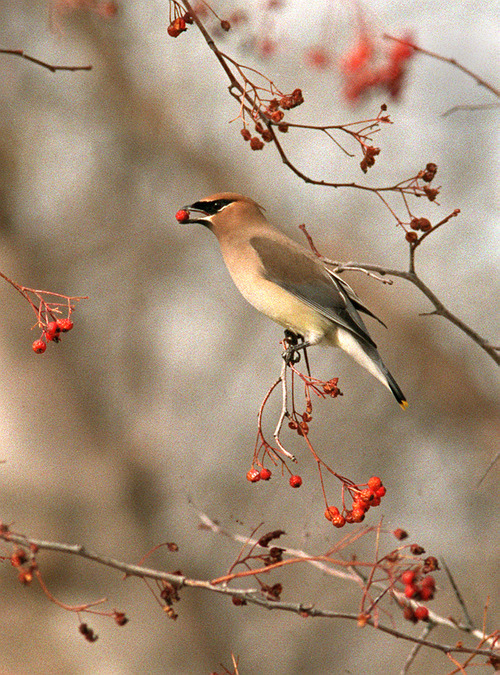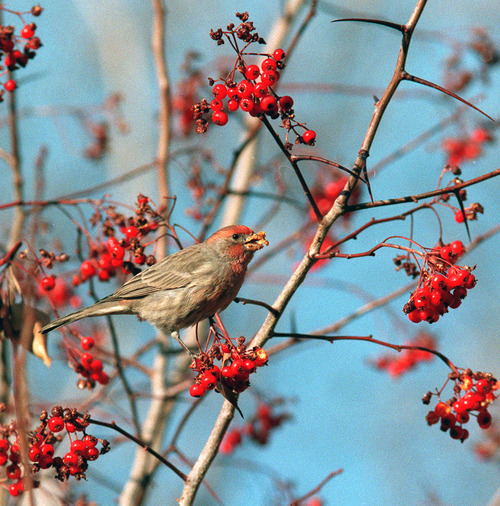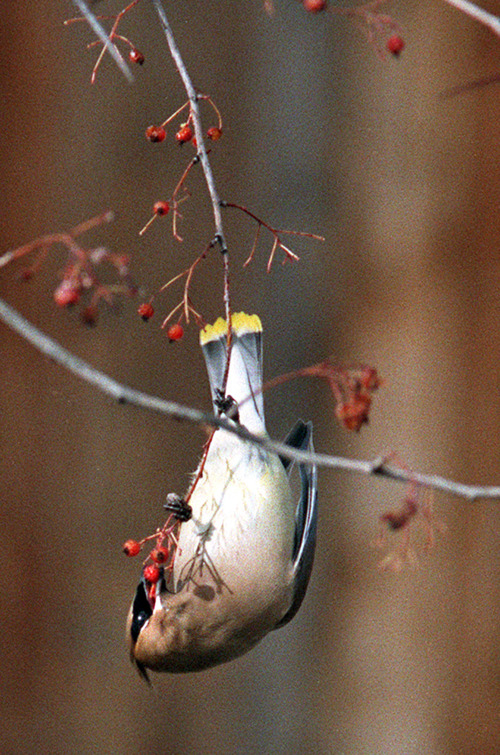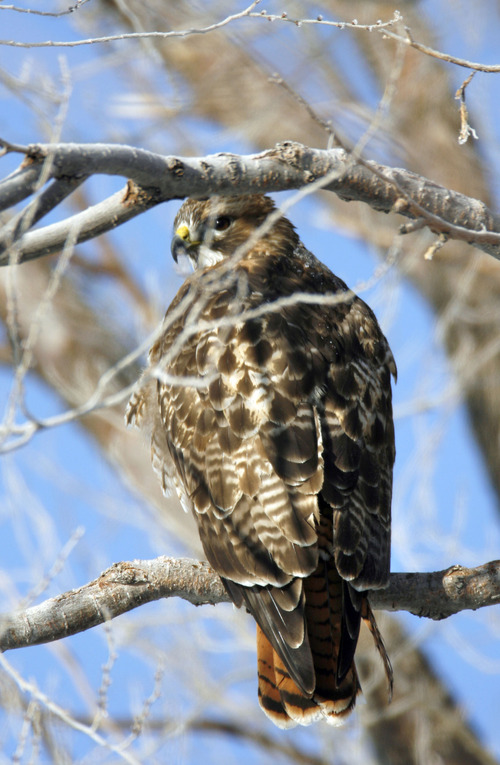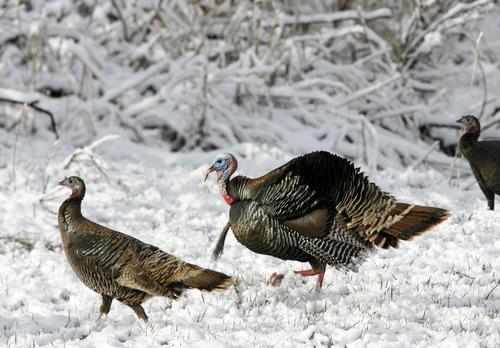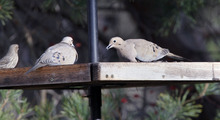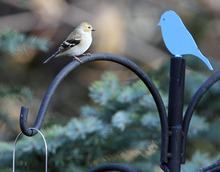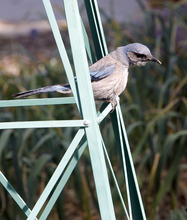This is an archived article that was published on sltrib.com in 2012, and information in the article may be outdated. It is provided only for personal research purposes and may not be reprinted.
For more than 100 years people have bundled up each December and taken to the woods, fields and mountains for the National Audubon Society's Christmas Bird Count.
The 113th annual Christmas count kicks off across North America Dec. 14 and runs through Jan. 5, but not everyone will be traipsing around the countryside. Some may be sitting comfortably at their kitchen table in a robe, with a bird identification book close at hand and a hot beverage. Some may even be able to participate in the annual count from their work desks.
Pomera Fronce has been coordinating the Salt Lake Christmas Bird Count — there are 27 count circles scheduled in Utah for 2013 — for eight years. She realized the counters were hitting large open areas such as parks, cemeteries and school campuses, but mostly missing residential areas.
"A lot of good birds come to backyard feeders and we miss them," Fronce said. "There are also some people who don't like to do the counts for different reasons, like it is cold or they have kids who don't have a six- to eight-hour time span."
So Fronce decided to include feeder watchers in the Salt Lake count this year. She hopes fair-weather birders, families, people with physical limitations and those short on time will consider participating in Utah's largest count.
The only requirements to qualify as a feeder watcher is a home within the Salt Lake Count circle — roughly 500 South in Bountiful to 5300 South in Murray and from the mouth of Emigration Canyon to 5600 West in the Salt Lake Valley — and that the participants contact Fronce before the count.
"This is not just about counting birds," Gary Langham, Audubon's chief scientist, said in a statement. "Because birds are early indicators of environmental threats to habitats we share, this is a vital survey of North America and, increasingly, the Western Hemisphere."
The Salt Lake count documented 109 species last year, the most of all Christmas counts in Utah, with a grand total of 34,407 overall birds. European starlings dominated the 2011 count with more than 12,000 spotted during the 24-hour time frame. Canada geese came in second with 4,468 sightings.
"People need to be able to identify most birds, but they do not need to be expert birders," she said. "The data we collect, and the expanded data we could add from feeder watchers, is important because it helps Audubon understand what is going on with bird populations."
People can call Fronce at 801-272-2755 about becoming a feeder watcher. She says other count leaders in Utah may be willing to work with feeder watchers and she encourages those interested to make contact with leaders in those count areas.
Those wanting to stretch their legs or put some miles on their vehicles can participate in the traditional form of the counts from Bear Lake in northern Utah to St. George on the south to the Ouray National Wildlife Refuge on the east and the Fish Springs National Refuge on the west.
To make it easier to participate, the $5 fee to serve as a Christmas counter has been discounted for the 2012 count.
"I couldn't be prouder of the 60,000-plus volunteers who contribute each year," Audubon President and CEO David Yarnold said in statement. "This is the largest, longest-running animal census on the planet, and we're all proud to be a part of the CBC."
Listings of the scheduled counts be found at the National Audubon Society website at http://www.audubon.org. Preregistration is encouraged in some cases.
National Audubon Society's 113th annual Christmas Bird Count
P Twenty-seven National Audubon Society Christmas bird counts are being held in Utah from Dec. 14 to Jan. 5. The counts range from Bear Lake in the north to Torrey in the south and include populated areas such as Salt Lake City, Provo, St. George, Ogden, Park City, Moab and Logan. Popular out-of-the-way counts include Antelope Island State Park, Bryce Canyon National Park, Dinosaur National Monument, Zion National Park and Grand Staircase/Escalante National Monument. For details, visit the National Audubon Society. > http://www.audubon.org


